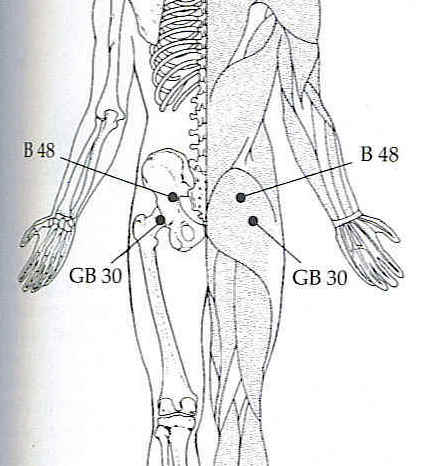Acupuncture: The Treatment of Seasonal Affective Disorder
/Seasonal affective disorder (SAD), a type of depression, is a debilitating problem that interferes with the quality of life of thousands of patients, especially during the fall, winter and early spring.
This syndrome seems to be a worldwide phenomenon and occurs cross culturally, especially in countries far from the equator. Clinical symptoms that reappear regularly with the seasonal changes include lethargy; difficulty concentrating; depression; negative thoughts; elevated cravings for carbohydrates with corresponding overeating and weight gain; hypersomnia (excessive sleepiness); tiredness in the morning; diminished libido; and decreased social interaction. Patients typically become more anxious by the end of the summer as they anticipate the coming months, during which less sunlight is present and their symptoms return. (acupuncturetoday.com, written by Skya Abbate)
Clinical experience reveals that patients may have other mental problems as well, such as substance abuse disorders, personality disorders and anxiety disorders, which as comorbdid conditions, further exacerbate the degree of the SAD patient's symptoms. Flaws and Lake define SAD as "a variant of bipolar disorder characterized by cyclic manic, depressive or mixed mood states that are somehow triggered by external clues to changing seasons, including principally, increased or decreased day length. Individuals with SAD tend to become depressed during the autumn months and manic during the springtime."1 This is a complicated disorder that may accompany many severe illnesses such as cardiovascular and endocrine disease, and for which a patient should seek qualified professional help. Seasonal affective disorder does, however, respond well to treatment with Oriental medicine.
Seasonal Affective Disorder (SAD) is an example of how a change in seasons can affect our emotional and physical wellbeing. Between 4 and 6 percent of the U.S. population suffer from SAD. It is more commonly observed in those who live at high latitudes (areas farther away from the equator to the north and south). Seasonal changes are generally more extreme in these regions, supporting the idea that SAD is caused by changes in sunlight availability.
While SAD can occur during summer with limited symptoms such as weight loss, trouble sleeping and decreased appetite, its winter symptoms tend to be more severe. Winter-time sufferers of SAD can experience fatigue, increased need for sleep, decreased energy levels, weight gain, increase in appetite, difficulty concentrating and increased desire to be alone.
The TCM yin and yang forces of the seasons coincide with those of the body. The Yellow Emperor’s Classic of Medicine states that, “People and nature are inseparable.” While yang’s warmth, activity and brightness work through out the spring and summer months, yin’s passivity, coldness and darkness begin in autumn and continue until spring equinox. Therefore, the winter months, which represent the height of the yin cycle and the water element, can cause those whose constitution tends toward yin to feel the effects of this season more acutely.
Western medicine currently treats seasonal affective disorder with light therapy and sometimes with antidepressants. This is because energetic imbalances, which are associated with emotional and physical disturbances in the body, can become more pronounced after a change in weather and sunlight. The downside to these light therapies is that they carry side effects such as eyestrain, headache, irritability, fatigue, insomnia, palpitations, high blood pressure and reduced libido. Also, these therapies do not address the underlying problems, but merely offer symptom relief.
Acupuncture is a natural alternative to light therapy or antidepressants. Acupuncture, which has shown promising results treating depression by releasing serotonin and noradrenaline-norepinephrine, has no side effects. Together with a treatment plan created by a licensed acupuncturist, acupuncture can improve balance of mood and energy, relieving the patient from the burdens of a depressed, unbalanced system.
The winter months are associated with the kidney system, which is the base of qi, our vital energy. The kidney creates fire and warmth and provides energy to other organs. As our bodies use up energy keeping warm, they begin to crave quick sources of new energy in high calorie foods, which are stored as fat to keep the body warm. These foods do not sustain energy levels in the body, nor do they properly nourish the kidney, and with this energy depletion we tend to feel more lethargic and sensitive to our surroundings. This is why winter is a time to seek replenishment of body, mind and spirit.
Nourishment in all areas of life is especially important during the winter months when SAD is most common. Although many people head indoors during winter, it is important to continue outdoor activities to expose yourself to daylight, and to take part in activities that support inner balance. Physical and mental stress, as well as poor sleep and nutrition, further deplete the body’s energy and leave you susceptible to illness. You should rest and conserve energy, but also spend time with friends and loved ones, cultivate your inner dialogue and eat a well balanced diet. Eating less fruits, increasing whole grain intake and plenty of warming foods such as soup, is a great way to nourish the kidney system.
Oriental medicine can restore the balance our bodies seek during seasonal transitions. While the tendency is to look inward or become preoccupied with one area of our health, such as maintaining energy and keeping warm, it is important to remember that balance in everything from your diet to your living environment is essential in sustaining a positive outlook and a healthy mood. (pacificcollege.edu)











![Self-regulation “control [of oneself] by oneself"](https://images.squarespace-cdn.com/content/v1/55563e14e4b01769086817cb/1542845645966-PO2HGKF5JLUBM45UIWQ3/wee-lee-790761-unsplash.jpg)





















